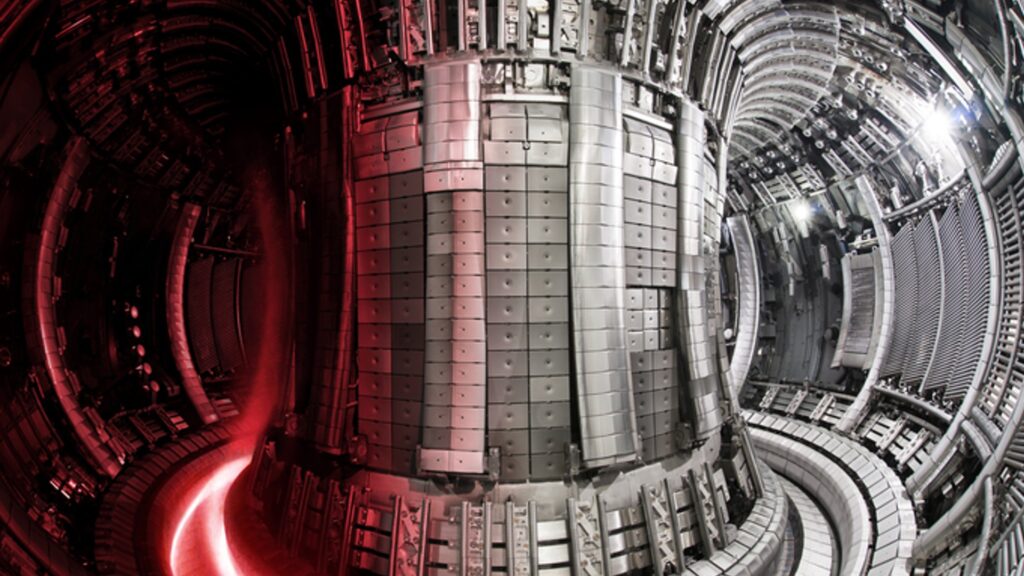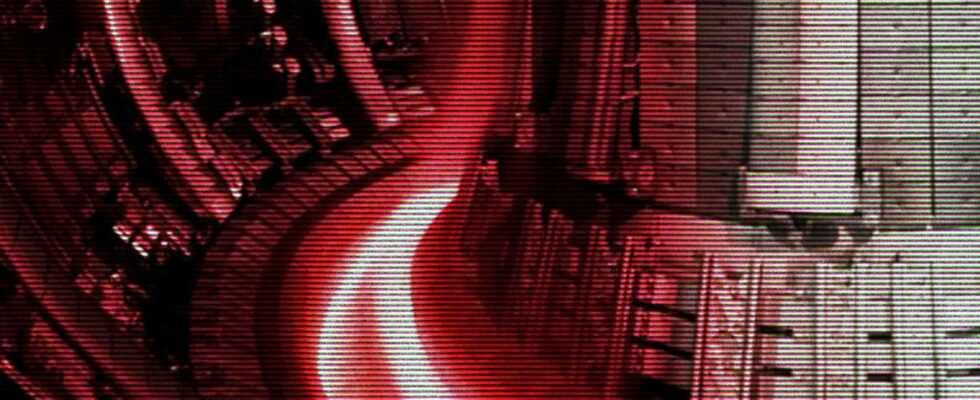Nuclear fusion could become a powerful source of “clean” energy in the future. Here are some basics on what is nicknamed “artificial sun”.
An “artificial sun” is not actually a star in a laboratory. This is the term used to refer to nuclear fusion reactors. However, these reactors reproduce very exactly the chemical and physical reactions that take place in the stars and which explain their brilliance.
How does an artificial sun work? What are the challenges of nuclear fusion?
How does nuclear fusion work?
There are several nuclear fusion techniques, but they always have one thing in common: it involves the reproduction of the physical and chemical mechanisms that take place in the heart of stars, that is to say the transformation of hydrogen into helium (and therefore energy).
A typical nuclear fusion reactor is a “tokamak”, a doughnut-shaped vacuum chamber (a spherical corridor). Within this chamber, a deuterium-like gas, whose natural isotope is hydrogen, is heated by magnetic confinement — and there are other heating techniques, such as “inertial confinement” using lasers . From a certain temperature, the hydrogen merges, the gas is completely “ionized” (which means that it is stripped of its electrons). It is this state of matter that is described as ‘plasma’, a dense and hot state. The hydrogen then turns into helium. But how do you transform this helium plasma into usable energy?
Within the chamber, conditions are very unstable. The challenge is to stabilize these conditions within a magnetic field. It is via the walls of the tokamak that the energy produced by the fusion can be recovered. The hotter the plasma, the higher the recoverable energy. The longer this state of matter is maintained over time, the more constant a source of energy can be obtained. It is therefore necessary to achieve very high heat at the same time, over a long period of time.
It is this same process of transforming hydrogen into helium that generates the energy of stars, and therefore their brightness. Except that within a reactor, the heat is… higher than within our Sun. China’s artificial sun recently broke a record 120 million degrees, hotter than our Sun’s 15 million degrees.
What is the difference between nuclear fusion and nuclear fission?
Nuclear fission is the process already used in current nuclear power stations, which provide energy. In this process, the atomic nuclei are split. Nuclear fusion consists, on the contrary, in fusing the nuclei so that they generate a plasma, a source of energy. Nuclear fusion is not, to date, a viable source of energy. But many projects are working on it.
Unlike nuclear fission, nuclear fusion is supposed to generate much less “waste”. This energy route could turn out to be less polluting overall.
Why must the ignition threshold be reached?
In 2021, the artificial sun at the National Ignition Facility, an American laboratory, released 1.3 megajoules of energy for 100 trillionths of a second. This is already a feat in terms of energy produced, but, more importantly, it has reached 70% of the ignition threshold. This threshold can be defined as the energy break-even point, from which fusion generates at least as much (and then more) energy than the energy introduced initially.
To achieve ignition, the fusions within the plasma must themselves contribute to heating the plasma, maintaining the conditions in this dense and hot state within the reactor.
What is the record energy emitted by an artificial sun?
For the moment, we owe the record energy emitted to the JET reactor. The record set by this plant is 59 megajoules of energy during a 5-second phase, or just over 11 megawatts. It’s already a good step taken, but the objective would be to reach… 500 megawatts. This ambition is led by the international ITER project, whose JET reactor is a kind of scientific “prologue”.

What is the ITER project?
The ITER project (International thermonuclear experimental reactor) is an international scientific experiment which must be used to demonstrate the feasibility of a usable nuclear fusion reactor. The structure is currently under construction in France, in Saint-Paul-lez-Durance in the Bouches-du-Rhône. The reactor is a tokamak — donut-shaped and based on the magnetic confinement of hydrogen.
Many countries are associated with the project: all those of the European Union, but also the United States, China, Russia, Japan, South Korea, Switzerland, the United Kingdom. By the number of associated countries, but also the budget (nearly 20 billion euros), or even the challenge (a powerful source of “clean” energy), ITER is today considered the largest scientific project worldwide, all research combined.
Entry into service is scheduled for 2025, but there will be no first results before at least 2035. The ambition is to reach a power of 500 megawatts for almost 10 minutes, for an initial “injected” power of 50 megawatts. This would exceed the famous ignition threshold, with a profitability of 10 times the initial thermal power.

